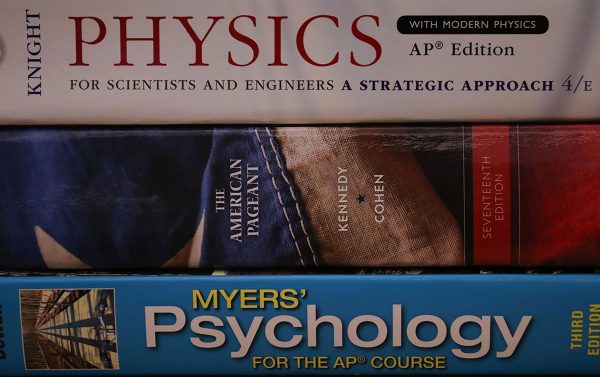Balanced diets lead to healthy status among students, boost performance of athletes
April 12, 2022
Type 2 Diabetes, hypertension, heart disease and many forms of cancer. These conditions are the long-term effects of a non-balanced, low nutrient diet that results from receiving less than adequate amounts of micronutrients and macronutrients, commonly categorized as vitamins and minerals, fats, carbohydrates and proteins. Micronutrients and macronutrients are especially important components of one’s health during teen years, as the body is still developing and growing. An average adolescent must ingest a variety of foods in order to remain in optimal health, including plenty of fruits and vegetables, whole grains, lean proteins — including meat and plant-based and healthy fats, which can be found in oils, fish and nuts. Dairy products — including lactose-free alternatives are also important for supporting bone mass development in teen years. This, however, is not to say diets will not vary.
Although the foundation for healthy eating habits remains the same, dietary needs are unique to each individual. The number of calories a person needs is dependent on a number of factors including age, physical activity, biological sex, height and weight, according to Amy McKenzie, Health and Success Center teacher at RBHS, said. The foods that provide this fuel must include micronutrients and macronutrients, although there may be a variation in the foods that provide them due to personal preferences, allergies, intolerances and access to certain foods.
Taking all of these factors into account, there are also variances when considering a non-athlete student as opposed to a student athlete.
Athletes will typically be more involved in physical activity, which requires fuel from calories, among other performance-enhancers. Because of the excess physical activity that athletes undergo, they must alter their eating in correspondence to these activities.
“Carbohydrates and fats are the primary energy sources for the body, so athletes may need to increase their consumption of these nutrients. Protein is important for the growth, repair and maintenance of body tissues, including muscle,” McKenzie said. “Therefore, athletes may need slightly more protein. Proper hydration, by consuming adequate amounts of water, is essential for athletes as water is lost via sweat, and consuming adequate vitamins and minerals will support an athlete’s performance as well.”
Vitamins and minerals that serve this purpose include calcium, which promotes bone density and aids in the prevention of fracture and injury, and iron, which assists the body in creating hemoglobin, the substance that carries oxygen around the body and reduces fatigue. Freshman boys basketball coach, Travis Gabel, said he also believes there are benefits in leading healthy habits when it comes to athletics, as his firsthand experience reflects.
“You are able to perform at your maximum,” Gabel said. “It’s not that you can’t perform on food that’s not great for your body, it’s just not going to help you maximize your performance. You will have more energy with the more plant-based things you eat.”
A healthy diet for all students, regardless of athletics, should also include plenty of water, which can even merge with the recommended food groups in order to receive the proper micronutrients. Many fruits and vegetables are high in water content, so increasing the number of fruit and vegetable servings each day not only supports hydration, but offers many important vitamins and minerals too. There are also foods all students, if they are an athlete or do not play any sports, should consider excluding from their eating habits.
“Try to avoid fast-food, soda and things like that,” Gabel said. “Even energy drinks are pretty high in sugar, so I would say reduce your sugar intake.”
McKenzie shares Gabel’s view of what students should steer away from when it comes to diet, but she offers some reassurance.
“Pre-packaged, processed foods are often high in sodium, added sugars, and trans fats and should be limited,” McKenzie said. “This does not mean that someone’s favorite snack has to be eliminated, but rather points to the importance of balance, variety and moderation within one’s diet.”
After observing the healthy diet template for all students as described by McKenzie and Gabel, the question arises whether or not diet changes with the position an athlete takes as a player or participant in their sport.
“Within the athlete community there will be variation,” McKenzie said. “For example, a cross-country runner, who needs long-term energy, may require a slightly different distribution of macronutrients than a long jumper, who needs a short burst of explosive energy.”
Gabel, as a basketball coach who experiences many different sizes and body types with the differing roles athletes serve on his team, suggests there is a nuance when it comes to eating habits of individual players, but the overall template remains the same when it comes to base-level nutrients.
“Not all athletes need the same level of protein depending on the sport,” Gabel said. “Wrestling, I’m sure, has a little bit of a different diet than a basketball player, but by and large what’s healthy for you is still going to be healthy for you regardless of the sport you’re in.”
Junior basketball player Brady Bowers plays a single sport, so his meals are dependent on the basketball season, and he needs to be consistent throughout each day to receive the nutrients he needs to perform as an athlete.
“My meal plan during basketball season is more strict than the off season. Before games I eat turkey sandwiches for protein and fruit snacks for sugar,” Bowers said. “I drink water throughout the day to stay hydrated and body armor and Gatorade before games. On off days I try to get three full meals with an egg breakfast, sandwich with ham or turkey for lunch and either chicken or steak for dinner.”
As McKenzie sees it, a nutrient-dense diet containing sufficient amounts of the base food groups are essential for athlete and non-athlete students alike. A reasonable proportion of carbohydrates and fats. The carbohydrates and fats of balanced food intake provide the primary energy for the body, which is in turn used to allow students to learn and perform other daily activities.
By eating a nutrient-dense, balanced di, students will retain focus, decrease fatigue and improve their mood. Also, as high school students are in stages of immense growth, their bodies are dependent on sufficient nutrients from a balanced meal.
These growths and adaptations include brain growth, acquisition of bone mass, development of muscle mass, hormonal changes that accompany the onset of puberty, to name a few, which are all correlated with a nutrient-density. Also, balanced eating now is important, as it sets the stage for lifelong eating habits that will reduce the risk of developing diseases involving pulmonary and blood sugar conflict.
“The bottom line is that basic nutrition guidelines exist to provide a foundation of nutrients that support growth, development and health of the human body,” McKenzie said. “However, each individual’s specific nutritional needs are unique and even change over the course of their life.”
Do you observe any specific dietary patterns to help boost performance? Let us know in the comments below.





























































































